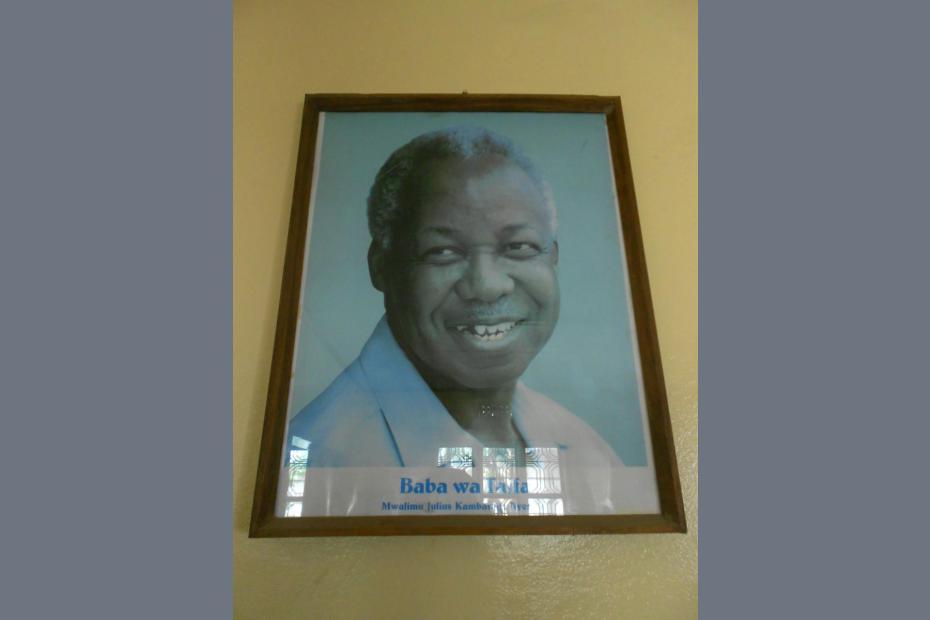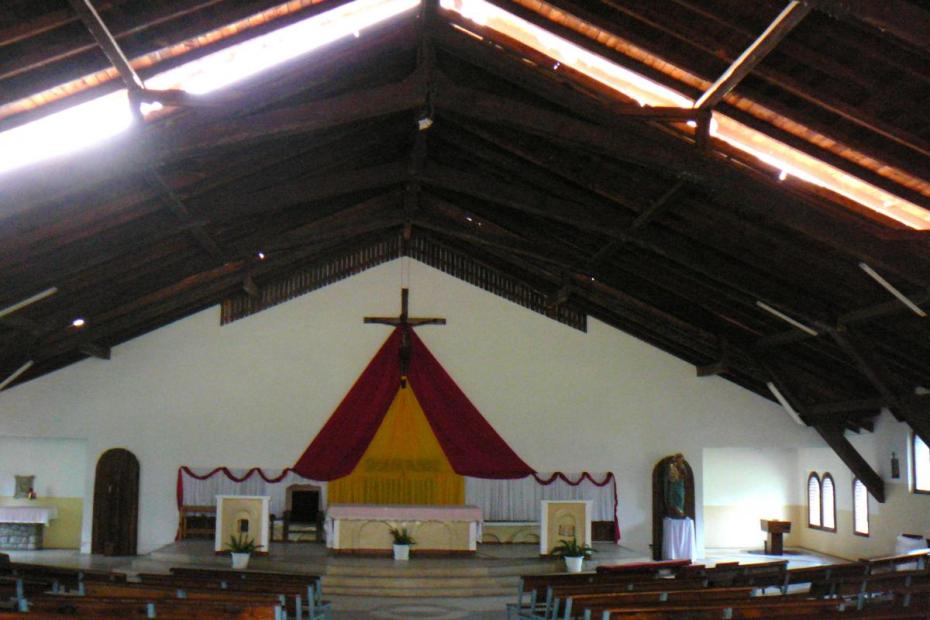Although he died in 1999, Julius Nyerere — fondly known in Kiswahili as “Mwalimu” (teacher) or “Baba wa Taifa” (Father of the Nation) — is never far from public discourse in 21st-century Tanzania. Nyerere was raised in the northern Tanzanian town of Butiama. The son of a prominent local chief and early Catholic convert, he benefited from a mission education and pursued university and graduate studies in the UK. He briefly worked as a secondary school teacher in the 1950s, earning his lifelong moniker “Mwalimu.” While teaching, he rose to prominence as the head of the Tanganyikan African National Union (TANU), the emerging nationalist movement agitating for the end of British colonial rule. He ultimately led TANU to victory in legislative elections and oversaw a remarkably smooth transition to independence in 1961. After violence broke out in Tanganyika’s neighboring island of Zanzibar in 1963-64, Nyerere also facilitated the integration of Zanzibar and Tanganyika into the modern state of Tanzania.
Nyerere is most famous for his envisioning and implementation of ujamaa (familyhood) socialism in the late 1960s and 1970s. Here Nyerere attempted to marry the ideals of modern Catholic social teaching, the communitarian ethos of traditional African society, and socialist economic theory. Through binding these three ideals together, Nyerere hoped to avoid the gaping socio-economic divisions that plagued much of Africa; the entire Tanzanian population was to start from the bottom and work their way to the top together. In practice, the impact of ujamaa remains decidedly mixed even today.
Inspired by ujamaa, the “Arusha Declaration” of 1967 had a major impact across Africa, signaling an economic shift to the left along with a non-aligned foreign policy. Closer to home, ujamaa resulted in very low income inequality and relatively high education rates. Some argue that these two factors are the reason for a unified country with a peaceful history despite the more than 120 competing tribes. Others, however, maintain that the sharing of wealth and teachers spread resources too thin and resulted in a generally poor population that received a low-quality education, effectively slowing the development of the country by decades.
Another aspect of ujamaa was Nyerere’s “forced villagization” program in the 1970s, which was intended to bring the scattered population together into small villages both to unify the people and to sustain basic services such as health clinics and schools. Though unpopular at the time, this program did begin to break down tribal divisions. Today, these villages still remain and have allowed some basic infrastructure to exist even in the deepest rural areas. Whatever the achievements of Nyerere’s ujamaa vision, Tanzania’s tepid economic performance in the 1980s left Tanzania as one of the poorest countries in Africa. Nyerere ultimately resigned the presidency in 1985 rather than bow to international pressure from the IMF and World Bank to liberalize Tanzania’s economy.
If socialism and Catholicism were often at loggerheads in 20th-century Europe, Nyerere personally held the two together. He attended daily Mass for much of his life and often contrasted the theistic foundations of ujamaa with the atheism of Marxist socialism. His relations with the institutional church were mixed. Maryknoll missionaries had close relations with Nyerere. On the other hand, local bishops did not enthusiastically endorse the Arusha Declaration, and some chafed at Nyerere’s commitment to a broadly “secular” political space. Such disagreements seemed to fade after his death, however, and the Tanzanian hierarchy has recently introduced Nyerere’s cause for sainthood, seeing him as a model African statesman in a region known for its political dysfunction and violence. Today Nyerere is widely celebrated as a devout Catholic committed to the national common good, Catholic social thought, and religious pluralism.
Read more
James R. Brennan, Taifa: Making Nation and Race in Urban Tanzania (Athens, OH: Ohio University Press, 2012).
William Redman Duggan and John R. Civille, Tanzania and Nyerere: A Study of Ujamaa and Nationhood (Maryknoll, NY: Orbis Books, 1976).
John. A Iliffe, Modern History of Tanganyika (Cambridge: Cambridge University Press, 1979).
Gregory, Maddox, ed., In Search of a Nation: Histories of Authority and Dissidence in Tanzania (Oxford: James Currey, 2005).
James C. Scott, Seeing like a State: How Certain Schemes to Improve the Human Condition have Failed (New Haven, CT: Yale University Press, 1998).

